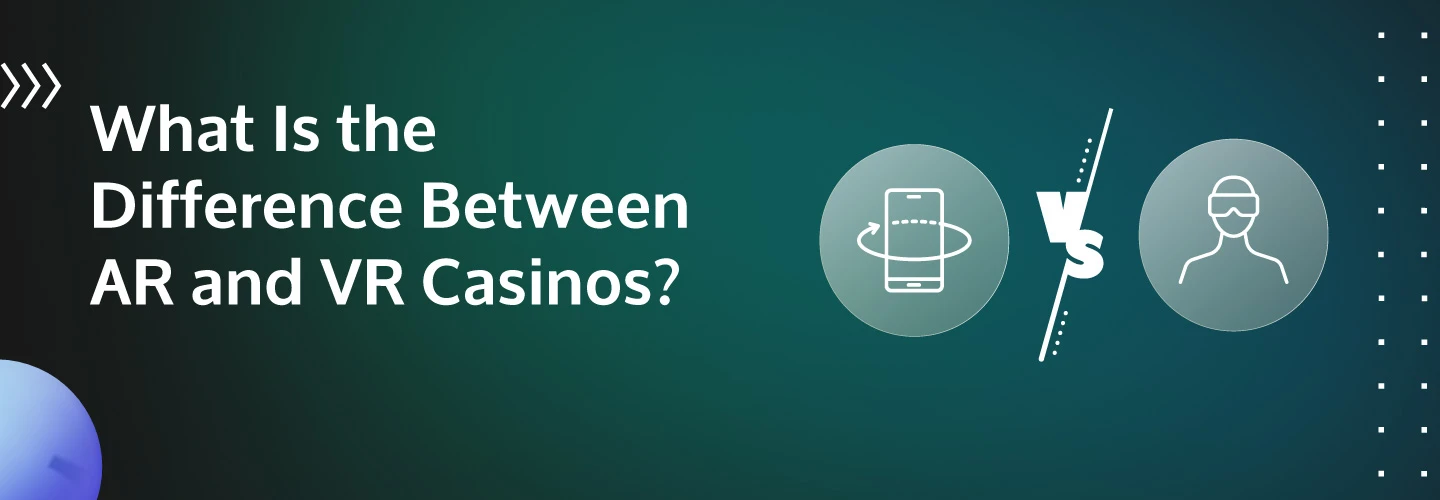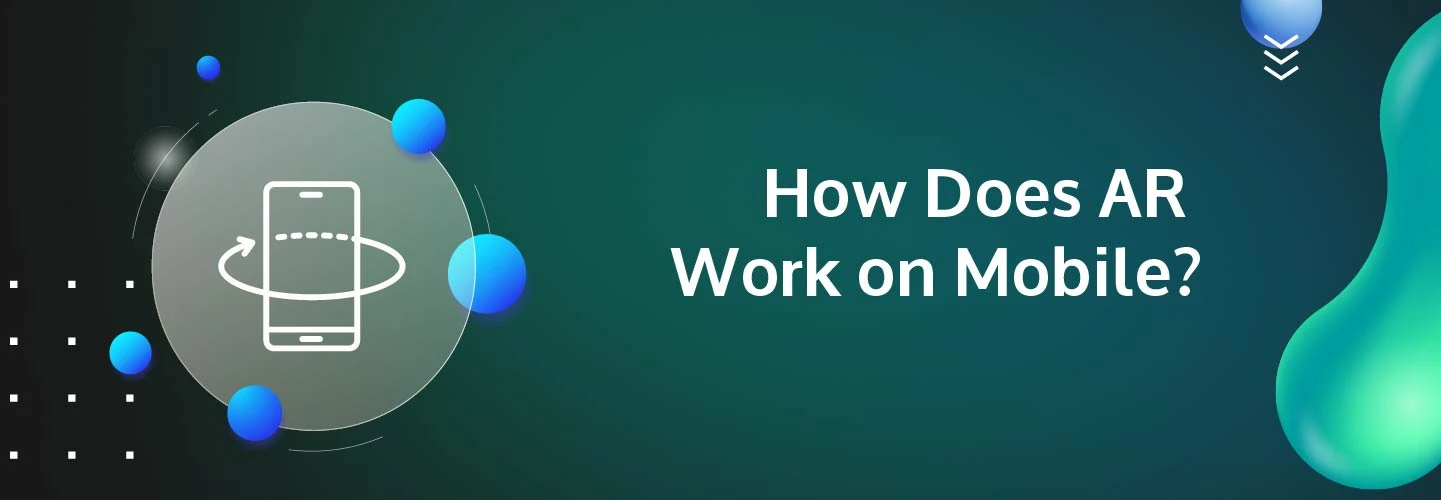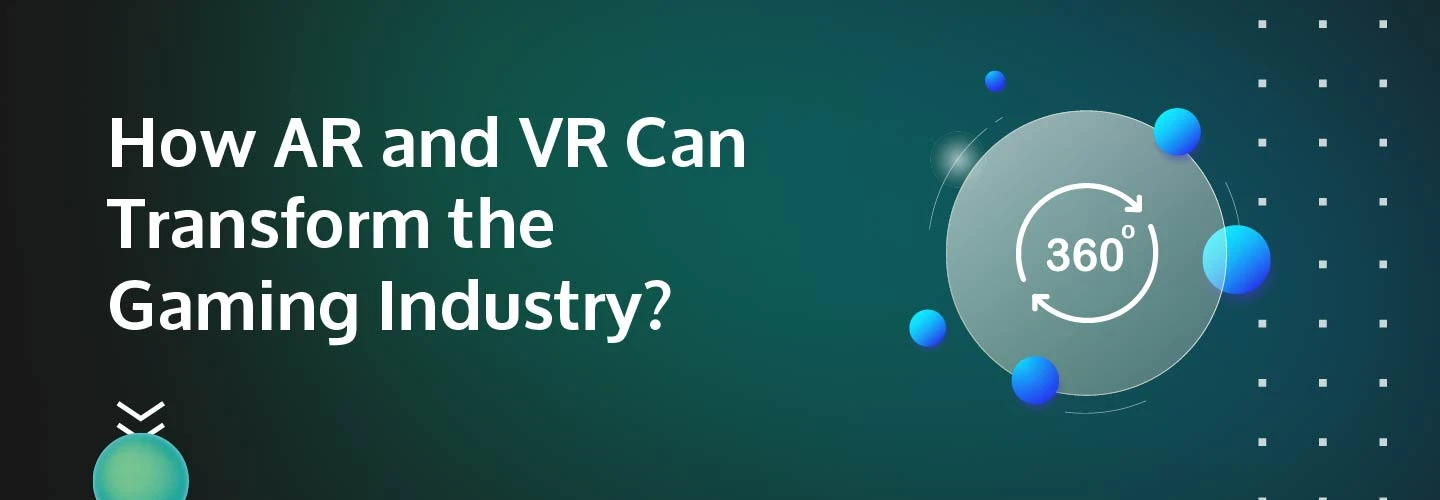Augmented Reality Casinos: AR Gambling to Change the Face of Gambling
Imagine sitting at a high-stakes poker table in Las Vegas, feeling the tension in the air, and observing your opponents’ every move – all while lounging in your living room.
This is the enticing future of gambling, where Augmented Reality (AR) blurs the line between the virtual and the real.
Amid the unceasing quest for innovative ways to captivate and enchant gamblers, the gambling industry is tapping into the thrilling potential of AR. Augmented Reality Casinos are no longer a figment of a techno-optimist imagination; they’re the burgeoning reality set to redefine the gambling experience.
In this article, we’ll peel back the layers of this futuristic technology, diving deep into its impact on the AR casino world, the potential benefits and challenges, and how it might just revolutionise mobile casino gaming.
What Is Augmented Reality (AR)?
In its simplest terms, Augmented Reality (AR) is an innovative technology that overlaps digital information, such as images, sounds, and text, onto our real-world environment. Unlike Virtual Reality (VR) (which immerses users in a completely digital domain), AR intertwines the physical and digital worlds, enhancing our perception of reality with an interactive digital layer.
The concept of AR can be traced back to 1968 when computer scientist Ivan Sutherland developed “The Sword of Damocles,” the first head-mounted display system. However, the term “Augmented Reality” was not introduced until the 1990s, credited to Tom Caudell, a researcher at Boeing. As the late 2000s rolled in, substantial strides in mobile computing capabilities and the emergence of AR-centric applications like Pokemon Go drove the technology to gather significant momentum.
Fast forward to the present day, and AR has found practical applications across a multitude of industries. It’s enabling new ways to shop in retail, with virtual try-ons and enhanced interactive experiences. The healthcare industry has also been leveraging such technology for complex surgical procedures and therapeutic interventions.
And now, we’re witnessing this evolution in online gambling. Really, it’s no surprise. The iGaming industry has built a reputation for being at the forefront of technological trends, and its adoption of AR is no exception. This integration adds an unprecedented layer of realism and engagement to digital casinos, suggesting a new level of interactivity. It signals the onset of a transformative era where technology and entertainment converge in ways we are yet to fully comprehend.
How AR Technology Works
Understanding the workings of AR is like embarking on a fascinating journey that merges science, technology, and design. It begins with the key components that form the foundation of such systems: cameras, sensors, and sophisticated software.
- Camera: The camera is an AR system’s eyes. It captures the tangible surroundings on which digital elements will be superimposed. The camera quality significantly impacts the overall experience, as it defines the clarity and realism of the digital augmentations.
- Sensors and Accelerometers: These are the AR system’s feelers. Sensors and accelerometers detect changes in orientation, direction, and location. They provide essential data about how a user moves in the physical world, allowing the AR system to adjust the digital augmentations accordingly. For instance, when a user moves closer to or further from an AR object, sensors help the system scale the object in size, creating a sense of depth and perspective.
- Software and AR Engine: The software is the AR system’s brain. It processes the information captured by the camera and sensors, deciding what digital content should be displayed and where it should be placed within the real-world view. In essence, it’s responsible for creating and controlling the interactivity we see from our point of view.
Creating the Augmented Reality
Once these components capture and process the necessary data, the real magic happens: the creation of the Augmented Reality itself.
Here, the software generates the digital overlay. Depending on the AR application in question, this could be 3D models, text, images, or interactive elements. But it’s not just about merely projecting these digital entities; it’s about integrating them seamlessly into the user’s view of the real world in a natural and intuitive way.
Interaction and Interactivity
Something unique about AR software is that this can assign each digital element a corresponding position in three-dimensional space. This means that as the user moves around, the perspective and placement of these elements change in real-time to mirror the dynamics of actual interactions.
An Example: AR in Casino Games
Let’s consider an AR casino game as an example. The software might generate digital cards overlaid onto the user’s view of their physical environment. These cards are not static 2D images; they’re interactive 3D objects that exist within a specific location in the AR space. The user can ‘touch’ and ‘move’ these cards by performing specific actions that the AR system recognises, such as hand gestures or screen touches.
Moreover, the AR system constantly monitors the user’s actions and the physical environment through the camera and sensors. When a change is detected – for example, if the user ‘picks up’ a digital card – the system responds immediately, adjusting the visual display to reflect this action. This dynamic interactivity is what makes AR experiences feel so engaging and lifelike.
AR Versus VR
Contrary to a common misconception, AR and Virtual Reality (VR) are not interchangeable terms. While both technologies operate in digital enhancement and immersive experiences, they fundamentally differ in their execution, capabilities, and impacts.
To clarify, let’s explore their key similarities and differences:
| Augmented Reality (AR) | Virtual Reality (VR) | |
| User Experience | Enhances real world with digital overlays | Creates an entirely digital, immersive environment |
| User Interaction | User can interact with both digital and physical elements | User interacts only with virtual elements |
| Equipment Required | Can be used on smartphones, tablets, AR glasses | Requires specialised VR headset |
| Real World Interaction | Preserves awareness and interaction with real world | Isolates user from the real world for immersive experience |
| Applications in Gambling | Transforms physical environment into personal casino | Provides fully immersive digital casino experience |
| Multi-tasking | Allows users to multi-task with AR elements in the background | Requires full attention from the user |
| Content Creation | Content creation can be user-generated and dynamic | Content is pre-designed and static |
| Market Maturity | Emerging technology with rapidly growing applications | Mature market with established applications in gaming, training, etc. |
AR supplements reality, laying digital elements onto the physical world and enhancing the perception of the surrounding environment. On the other hand, VR takes whoever’s behind the headset to an entirely virtual domain. Users are wholly disconnected from what is actually around them and fully immersed in a digitally constructed environment.
Despite their differences, both technologies offer unique value propositions for the casino industry. VR’s fully immersive experiences could enable users to walk through a digital replica of The Hippodrome, for example, interacting with the environment and other players in ways that simulate a real-life casino visit. The experiences are highly immersive and visually compelling, creating a solid sense of presence in the virtual environment.
Meanwhile, AR has the potential to transform a player’s physical environment into a personal casino, overlaying digital poker tables, slot machines, or other games onto the player’s immediate surroundings. This retains a connection with the natural world while adding an interactive, engaging layer of digital gameplay.
Thus, the key differences between AR and VR contribute to their potential impacts on the gambling industry. It’s not about one technology being ‘better’ than the other; instead, each offers unique pathways to enriching the casino experience. They invite different modes of interaction, engagement, and immersion, bringing new dimensions to the gambling world that cater to various gamer preferences.
How AR and VR Impact the Casino Industry?
AR’s Impact on the Casino Industry
Meanwhile, the introduction of AR into the gambling industry promises to disrupt the sector in its own unique way. AR technology brings the casino to the player, blurring the lines between the digital and physical worlds.
Let’s explore some of the potential benefits and downsides that AR brings to the table in the realm of gambling.
| Benefits of AR in Gambling | Downsides of AR in Gambling |
| Innovative Gameplay: AR offers a unique gaming format that interweaves the digital and physical realms, creating immersive, interactive experiences. | High Entry Cost: The adoption of AR technology requires significant investment in research and development, software development, and AR-compatible user equipment. |
| Expansion of Customer Base: By offering a new and engaging platform, casinos could potentially attract a larger and more diverse audience. | Regulatory Challenges: The fusion of digital and real-world elements may present new challenges in terms of regulation and user protection. |
| Business Growth Opportunities: The development of AR platforms could lead to the creation of novel games and services, opening up additional revenue streams for businesses. | Technology Limitations: AR is still an emerging technology, and certain technical limitations or challenges could impact the quality and reliability of AR experiences. |
| Improved User Engagement: The interactive nature of AR can heighten user engagement, potentially driving higher player retention rates. | User Acceptance: As a new mode of interaction, users may require time to adjust and become comfortable with AR gaming experiences. |
| Enhancement of Existing Games: AR can add a new dimension to traditional casino games, enriching them with interactive and immersive elements. | Dependence on User Equipment: The quality of AR experiences heavily depends on the user’s equipment, which might restrict its accessibility and popularity among certain player groups. |
VR’s Impact on the Casino Industry
The widespread incorporation of VR into gambling can significantly shake up the industry’s dynamics. Here’s how:
| Benefits of VR in Gambling | Downsides of VR in Gambling |
| Enhanced gaming experience: More immersive and interactive sessions could increase customer engagement and drive higher player retention rates. | Increased investment needed: Smaller casinos or those less technologically adept may struggle to keep up with the necessary investments, potentially widening the gap between the industry’s leaders and laggards. |
| Stimulates technological investment: The competitive nature of VR could push brands to invest more in technology, driving innovation. | Accessibility for older demographics: The older generation, who represent a significant portion of the casino-going public, may find it more difficult to adapt to and engage with the technology, potentially alienating these customers. |
| Diverse ecosystem: The introduction of VR in gambling could lead to a number of technology companies offering VR gambling solutions, enriching the market. | Digital divide: The need for specific hardware and a strong internet connection could exclude potential customers in areas with limited technological infrastructure. |
| Increased revenue: The unique experience offered by VR could attract more customers, potentially increasing revenue for casinos. | Regulatory challenges: The introduction of VR gambling might bring up new regulatory and legal issues that need to be addressed. |
| Personalised experiences: Casinos can use VR to offer personalised and unique experiences to each customer, enhancing customer satisfaction. | Privacy and security concerns: With VR, more personal data might be required which increases the risk of privacy breaches. Also, secure payment processing within the VR environment could pose challenges. |
Augmented Reality and Live Dealer Games
Augmented Reality has the potential to revolutionise live dealer games, adding a new level of interactivity and visual appeal. In a blackjack game, for instance, AR could transpose the dealer onto your kitchen table, dealing cards and engaging in real-time chat as if they were there in person. Roulette wheels could be spun in the corner of your living room, while poker opponents could be visualised sitting around your dining table. This extraordinary fusion of the digital and physical environment could drastically enhance the immersion and thrill of such games, transforming conventional online gambling into a more dynamic and engaging spectacle.
What Does an AR Set Mean for an Average Online Gambler?
The advent of AR gambling sets presents a tantalising prospect for online players. For one, they provide a more tactile, engaging gaming experience compared to traditional online casinos. Players can walk around their AR poker table, inspect their AR slot machine from different angles, or even ‘reach out’ to touch their cards – all from the comfort of their homes.
However, adopting AR also requires a certain investment. Players need AR-compatible devices, which may range from smartphones with AR capabilities to more advanced, standalone AR glasses. Additionally, learning to navigate AR games might require some getting used to, given the unique blend of natural and digital interactions.
Nonetheless, the potential of AR gambling sets extends beyond the novelty. It hints at a future where online gambling is not just about clicking buttons on a screen but about exploring, moving, and interacting within a spatially aware digital arena.
Will Augmented Reality Change Mobile Casino Gaming?
Without a doubt!
Here’s how the integration of AR could redefine the mobile gaming landscape, acting as a conduit for increased immersion, interaction, and a more realistic gaming experience:
- Personalised Avatars: Unlike stationary platforms, mobile devices accompany users in their daily lives. This constant proximity could allow for highly customised avatars in AR mobile casinos. Using AI and data analysis, the avatar can learn from and mimic the player’s expressions, gestures, and even gaming habits, enhancing the game’s sense of presence and personal touch.
- Convenience in Spatial Use: Unlike desktops or laptops, smartphones offer the flexibility of playing anywhere. Integrating AR into mobile casinos means players can turn any environment into a personal casino – whether waiting for a bus or in the back seat on the M5.
- Improved User Interface (UI): Mobile casinos are currently limited by screen sizes, making managing complex games challenging. With AR, UI could be overlaid in the environment around the device, thus bypassing the screen-size constraint.
- Augmented Social Interactions: While multiplayer games exist in all online casinos, mobile AR can offer a more personal, face-to-face experience. Gamers can project holographic avatars of others onto their environment or even visit a friend’s virtual casino room.
- Outdoor Gaming: Exclusively on mobile platforms, AR can leverage GPS data for location-based casino gaming. Players could discover virtual slot machines in the park or join a poker game at a local landmark. Such gaming experiences are unique to mobile AR casinos and represent a significant shift from the conventional online gambling environment.
- Battery and Data Management: The introduction of AR can put a new spin on how mobile casinos manage power and data consumption. With the increased computational needs of AR, developers would have to innovate ways to ensure optimal performance without draining battery or data quickly.
How Does AR Work on Mobile?
AR on mobile platforms operates by using a combination of components present in the device, such as the camera, the accelerometer, and the gyroscope. The camera captures the real world, and then the software adds virtual objects to this reality, rendering them in real time.
The difference between AR on mobile and other platforms, such as headsets or smart glasses, is mainly in the level of immersion and interaction. Mobile AR relies on the phone’s screen as a window into the augmented world, making it less immersive than dedicated AR devices. However, advancements in mobile technology are progressively narrowing this gap.
Does AR Work on All Phones?
AR compatibility varies across phone models. Generally, newer ones with more robust processors, advanced cameras, and sophisticated sensors are needed for optimal AR performance.
As for future trends, more mid-range smartphones are expected to become AR-compatible. Developments in mobile technology, such as improved processors, better sensors, and advancements in AI, will make AR more accessible to a broader range of devices.
Are There Any AR Online Casinos Today?
Yes, there are online casinos embracing AR today.
A prime example is XR Casino, an innovative platform that recently announced its impending launch. The brand is forging a unique, cross-platform gambling environment, integrating AR, Mixed Reality (MR), and Virtual Reality (VR) into a single, multiplayer, blockchain-powered platform.
In its debut in August, XR Casino will roll out classics like blackjack, roulette, and slots, with a vision to incorporate sports betting and other games down the line. It extends its services to a broad spectrum of devices, encompassing iPhones, a diverse array of Android smartphones, and equipment from big names like Oculus, Samsung, and Microsoft.
What Is the Future of AR in the Casino Industry?
Emerging technologies like AR are rapidly transforming our world, and industries that fail to keep pace risk obsolescence. This is especially true when it comes to playing online, where the younger generation’s connection to innovative technology far outweighs their allegiance to traditional games. And why shouldn’t it? AR, with its ability to provide an immersive, interactive, and visually captivating experience, is drastically changing how people interact and spend their time online.
The horizon of AR in online casinos is broad and promising. As this technology matures and becomes more readily available, we can expect its adoption to accelerate. AR brings opportunities for innovative game designs and highly interactive, personalised gambling experiences. While it’s still early days, its integration into casino brands signals an exciting phase of technological progression in the gambling industry. It points toward a future where the boundary between the physical and the virtual is seamless, significantly enhancing the thrill and realism of online gambling.
Augmented Reality Casinos FAQ 🤖
Yes, VR and AR are seen as the future of gaming due to their ability to provide immersive and interactive experiences that far surpass traditional gaming platforms.
Yes, many modern casinos use AI for a variety of purposes, including data analysis, player behaviour prediction, and personalised marketing.
Absolutely! Gambling with ChatGPT or some other AI tool can aid in gambling by analysing betting patterns, identifying risky behaviour, and assisting in creating unique gaming experiences.
While it’s difficult to say definitively, AR has the potential to overcome VR due to its accessibility and ability to blend with the real-world environment.
The Metaverse is a collective virtual shared space, created by the convergence of physically virtually enhanced reality, across all digital platforms.
AR and VR are revolutionising the metaverse by offering immersive and interactive digital experiences that mirror or enhance our physical world.
Passive income from Metaverse Casino NFTs can be made by owning and renting out digital properties or assets, or by earning dividends from the success of the casino.
Immersive technologies like AR and VR play a crucial role in the betting industry by enhancing user experiences, promoting engagement, and offering new formats for betting and gambling.

Charlon's unquenchable wanderlust and creative prowess fuel a dedication to crafting content that is informative, educational, and engaging. iGaming, technology, and travel remain the three…
More info on Charlon Muscat





